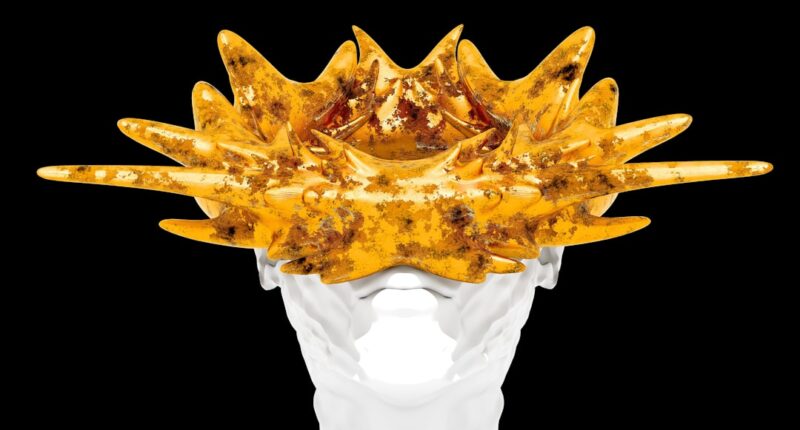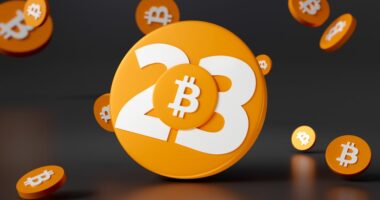As we delve into 2023, the landscape of non-fungible tokens (NFTs) has undergone significant transformation, evolving from a niche digital asset to a mainstream phenomenon. Initially, NFTs captured the public’s imagination through high-profile sales of digital art and collectibles, but their utility has expanded far beyond these early applications. Today, NFTs are being integrated into various sectors, including gaming, music, and even real estate, showcasing their versatility and potential for innovation.
The technology underpinning NFTs, primarily blockchain, continues to mature, providing a more robust framework for ownership and provenance that appeals to both creators and consumers alike. The NFT market has also seen a diversification of its audience. While early adopters were primarily tech enthusiasts and digital artists, the demographic has broadened to include traditional investors, brands, and even celebrities looking to capitalize on this burgeoning market.
This shift has led to an increase in the number of platforms facilitating NFT transactions, making it easier for individuals and businesses to create, buy, and sell these unique digital assets. As we navigate through 2023, it is evident that NFTs are not merely a passing trend; they represent a fundamental shift in how we perceive ownership and value in the digital age.
Key Takeaways
- NFTs have become a popular digital asset in 2023, offering unique ownership and provenance of digital content.
- The NFT market is evolving with trends such as fractionalized ownership, gamification, and virtual real estate gaining traction.
- New players and innovations in the NFT space include celebrity endorsements, virtual fashion, and metaverse development.
- Regulatory changes are impacting NFTs, with increased scrutiny on copyright infringement, taxation, and investor protection.
- NFT adoption is growing in mainstream industries such as art, music, gaming, and sports, creating new revenue streams for creators and brands.
- Environmental concerns are driving the adoption of sustainable NFT practices, with a focus on reducing energy consumption and carbon footprint.
- Social media plays a crucial role in NFT promotion and sales, with platforms like Twitter, Instagram, and TikTok driving awareness and engagement.
- Future predictions for the NFT space include increased integration with augmented reality, virtual reality, and the development of NFT-backed financial products.
Evolving NFT Market Trends
Utility-Driven NFTs: A New Era of Value Creation
The NFT market in 2023 is witnessing a significant shift towards utility-driven NFTs, which offer more than just ownership of a digital asset. These NFTs often come with added benefits such as access to exclusive content, membership in virtual communities, or even real-world perks like event tickets or merchandise discounts. This shift signifies a maturation of the market, as creators and brands seek to provide tangible value to their audiences beyond mere speculation.
Interoperability: Breaking Down Barriers Across Blockchain Networks
Another significant trend is the increasing focus on interoperability among different blockchain networks. As various platforms develop their own ecosystems for NFTs, the ability to transfer assets seamlessly across these networks has become a priority. This interoperability not only enhances user experience but also fosters a more inclusive environment where creators can reach wider audiences without being confined to a single platform.
A More Sophisticated Ecosystem: Prioritizing User Engagement and Collaboration
As we move forward, these trends indicate that the NFT market is evolving into a more sophisticated ecosystem that prioritizes user engagement and cross-platform collaboration. The emphasis on utility and interoperability reflects a changing landscape where creators and brands are working together to provide more value to their audiences and create a more inclusive and connected community.
New Players and Innovations in the NFT Space

The NFT space has seen an influx of new players in 2023, ranging from established companies venturing into the digital asset realm to innovative startups focused solely on NFTs. Major brands are increasingly recognizing the potential of NFTs as a marketing tool and revenue stream. For instance, fashion houses are launching limited-edition digital clothing items that can be worn in virtual environments or used as avatars in gaming platforms.
This intersection of fashion and technology not only enhances brand visibility but also taps into the growing trend of virtual identity among consumers. In addition to established brands, numerous startups are emerging with innovative solutions aimed at enhancing the NFT experience. These include platforms that facilitate fractional ownership of high-value NFTs, allowing more people to invest in expensive digital assets without needing substantial capital.
Furthermore, advancements in augmented reality (AR) and virtual reality (VR) are paving the way for immersive NFT experiences that engage users in unprecedented ways. As these new players continue to innovate, they are reshaping the NFT landscape and expanding its potential applications across various industries.
Regulatory Changes Impacting NFTs
As the NFT market matures, regulatory scrutiny has intensified, prompting discussions about how best to govern this rapidly evolving space. In 2023, various governments around the world are beginning to establish clearer guidelines regarding the classification and taxation of NFTs. This regulatory framework aims to protect consumers while fostering innovation within the industry.
For instance, some jurisdictions are considering whether NFTs should be classified as securities or commodities, which would significantly impact how they are traded and taxed. Moreover, regulatory changes are also addressing concerns related to intellectual property rights and copyright infringement in the NFT space. As more creators enter the market, ensuring that their work is protected becomes paramount.
In response, some countries are implementing stricter laws regarding copyright enforcement for digital assets. These regulatory developments are crucial for building trust among consumers and investors alike, as they provide a clearer understanding of the legal landscape surrounding NFTs and help mitigate risks associated with ownership and transaction disputes.
NFT Adoption in Mainstream Industries
The adoption of NFTs has transcended the realm of digital art and collectibles, making significant inroads into mainstream industries such as music, gaming, and real estate. In the music industry, artists are leveraging NFTs to create unique experiences for their fans by offering exclusive tracks or behind-the-scenes content as digital collectibles. This not only provides artists with new revenue streams but also fosters deeper connections with their audience by allowing fans to own a piece of their favorite artist’s work.
In gaming, NFTs have revolutionized how players interact with virtual worlds. Game developers are increasingly incorporating NFTs into their titles, allowing players to truly own in-game assets such as skins, weapons, or even entire characters. This shift empowers players by giving them control over their digital possessions and enabling them to trade or sell these assets on secondary markets.
Additionally, real estate is beginning to embrace NFTs as a means of representing ownership of properties or land parcels digitally. This innovative approach streamlines transactions and enhances transparency in property ownership, showcasing the versatility of NFTs across various sectors.
Environmental Concerns and Sustainable NFT Practices

Environmental Concerns Surrounding NFTs
The growing popularity of NFTs has led to increased concerns about their environmental impact. The energy consumption associated with blockchain technology, particularly proof-of-work systems, has drawn criticism from environmental advocates who argue that the carbon footprint of minting and trading NFTs is unsustainable. In response to these concerns, many creators and platforms are actively seeking more eco-friendly alternatives.
Emerging Sustainable Solutions
The emergence of proof-of-stake blockchains has gained traction as a more sustainable option for minting NFTs while significantly reducing energy consumption. Furthermore, initiatives aimed at offsetting carbon emissions related to NFT transactions are becoming increasingly common. Some platforms are partnering with environmental organizations to plant trees or invest in renewable energy projects as a way to counterbalance their carbon footprint.
A Shift Towards Eco-Conscious NFTs
These sustainable practices not only address environmental concerns but also resonate with consumers who prioritize eco-consciousness in their purchasing decisions. As awareness grows around sustainability issues within the NFT space, it is likely that more creators will adopt environmentally friendly practices that align with consumer values.
The Role of Social Media in NFT Promotion and Sales
Social media has emerged as a powerful tool for promoting and selling NFTs in 2023. Platforms like Twitter, Instagram, and TikTok have become essential channels for artists and creators to showcase their work and engage with potential buyers. The visual nature of these platforms lends itself well to the promotion of digital art and collectibles, allowing creators to reach vast audiences quickly.
Additionally, social media influencers play a pivotal role in driving interest in NFTs by sharing their own collections or collaborating with artists to promote new releases. Moreover, social media platforms themselves are beginning to integrate NFT functionalities directly into their ecosystems. For instance, some platforms now allow users to display their NFT collections on their profiles or even facilitate direct sales through integrated marketplaces.
This convergence of social media and NFTs not only enhances visibility for creators but also simplifies the purchasing process for consumers. As social media continues to evolve alongside the NFT market, it will undoubtedly remain a critical component in shaping trends and driving sales within this dynamic space.
Future Predictions for the NFT Space
Looking ahead, the future of the NFT space appears promising yet complex as it continues to evolve at a rapid pace. One prediction is that we will see an increased emphasis on community-driven projects where ownership extends beyond mere possession of an asset. Decentralized autonomous organizations (DAOs) may play a significant role in this shift by allowing NFT holders to participate in decision-making processes related to project development or governance.
This collaborative approach could foster stronger connections among community members while enhancing the overall value proposition of NFTs. Additionally, as technology advances further, we can expect innovations such as enhanced virtual reality experiences that integrate seamlessly with NFTs. Imagine attending virtual concerts where ticket holders can interact with artists in real-time or exploring immersive art galleries showcasing NFT collections from around the world.
Such experiences could redefine how we engage with digital assets and create new avenues for monetization within the NFT ecosystem. Ultimately, while challenges remain—such as regulatory hurdles and environmental concerns—the potential for growth and innovation within the NFT space is boundless as we move further into 2023 and beyond.
FAQs
What are NFTs?
NFTs, or non-fungible tokens, are digital assets that represent ownership or proof of authenticity of a unique item or piece of content, such as art, music, videos, and other digital files.
What changed in the NFT space in 2023?
In 2023, the NFT space saw significant changes in terms of increased regulation, improved environmental sustainability efforts, integration with virtual reality and gaming, and the emergence of new use cases beyond art and collectibles.
How did regulation change in the NFT space in 2023?
Regulation in the NFT space became more stringent in 2023, with governments and regulatory bodies around the world implementing measures to address issues such as fraud, copyright infringement, and investor protection.
What sustainability efforts were made in the NFT space in 2023?
In 2023, the NFT space witnessed a greater focus on environmental sustainability, with the development of eco-friendly NFT platforms and the adoption of carbon offset initiatives to mitigate the environmental impact of NFT transactions.
How did NFTs integrate with virtual reality and gaming in 2023?
In 2023, NFTs became increasingly integrated with virtual reality and gaming, allowing users to purchase, trade, and use NFTs within virtual worlds and gaming environments, creating new opportunities for virtual asset ownership and monetization.
What new use cases emerged for NFTs in 2023?
In 2023, NFTs expanded beyond art and collectibles to encompass new use cases such as virtual real estate, digital identity verification, ticketing and event management, and tokenization of real-world assets, demonstrating the versatility of NFT technology.





